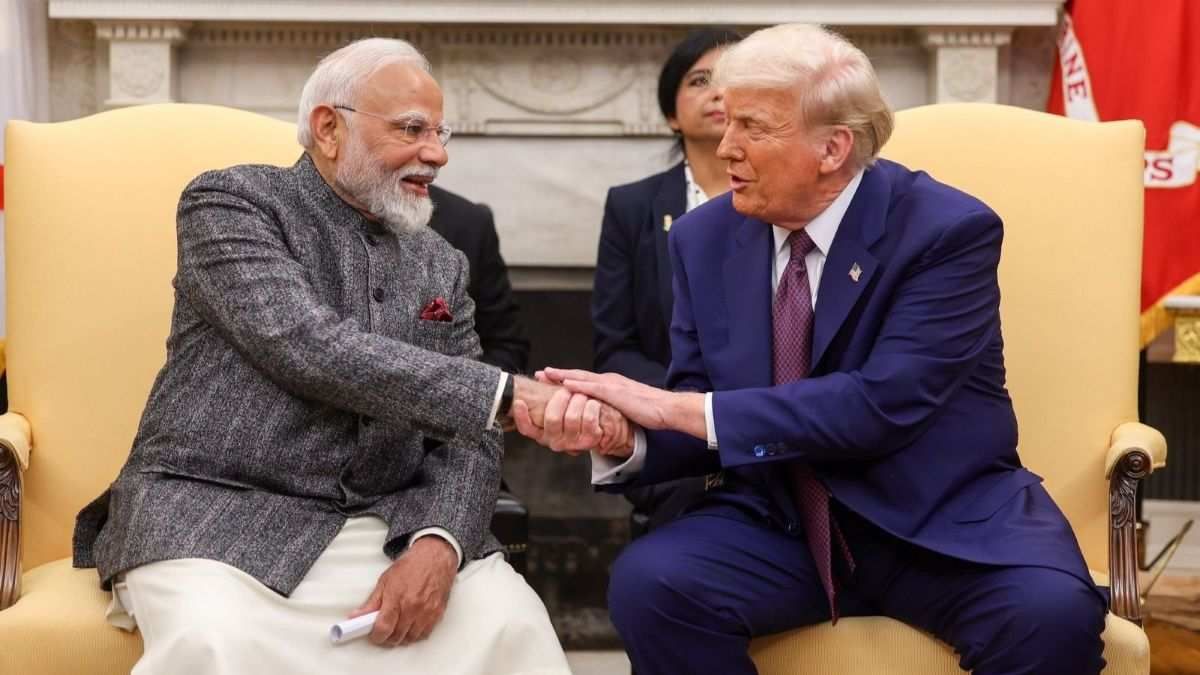After months of tensions between the world’s richest country and the world’s most populous one, it appears that the United States and India are on the verge of making a trade deal.
“We’re going to be bringing the tariffs down,” US President Donald Trump said during a swearing-in ceremony for the newly-minted US Ambassador to India Sergio Gor, while noting that India’s purchases of Russian oil have decreased. He didn’t give a timeframe, but added that the two sides were “pretty close” to a deal.
The inevitable question will be how much Trump lowers the tariff. The US president slapped a 25% levy on India in late July, in part because of Delhi’s purchases of Russian oil. When India refused to tell their companies to stop buying Russian crude, the tariff doubled to 50%.
“India’s oil purchases from Russia are on the downward trend,” Ashok Malik, partner and chair of The Asia Group’s India practice, told GZERO. “This creates a pathway for the removal of the 25% ‘oil tariff’ on India and, coinciding with Ambassador Sergio Gor’s arrival, steps towards the trade agreement.”
How did we even get here? Trump and Indian Prime Minister Narendra Modi were two peas in a pod during the former’s first term in office. The two leaders believed in espousing strength and in a foreign policy that prioritized bilateral relationships over multilateral agreements. They both viewed radical Islam and China with skepticism. When they held a giant rally together in Houston in 2019 – labeled, “Howdy, Modi” – the pair held hands.
“India was central in terms of our Asian strategy… It was incredibly simpatico between the two leaders,” Matthew Bartlett, who served in the US State Department during Trump’s first term, told GZERO. “Now there’s a new, rather difficult dynamic – maybe dysfunction – to it, and you would hope that we would be able to put this back on track in short time.”
When Trump returned to office earlier this year, it appeared that the two would start where they left off. Modi visited the White House in February, and the two leaders exchanged effusive messages.
But the good times didn’t last. Six months ago, when India and Pakistan announced a ceasefire following a brief flare-up in Jammu and Kashmir, Islamabad credited the Trump administration for helping to foster the peace, whereas India said the White House wasn’t involved. The issue was exacerbated when Trump told Modi over the phone that he was proud of the role he played in fostering peace – the Indian leader rejected his counterpart’s account.
Then in July, the tariff war began. Months later, even as the US has struck deals with the European Union, Japan, South Korea, and its greatest rival China, it still hadn’t reached any sort of truce with India. Washington’s 50% levy on India is now larger than the 47% effective rate on China.
“The entire dialogue between India and the US reached a boiling point where it was just very tense in terms of relations,” said Bartlett. “I think even Modi dodged Trump on his last trip.”
Further, Trump announced last week that he would exempt Hungary from Russian oil sanctions. No such luxuries were afforded to India, the second-highest purchaser of Russian oil.
The duties have taken a toll: Indian goods exports to the US, its largest foreign market, are down 40% over the last few months. Smartphones and pharmaceuticals were hit especially hard – exports of the former plunged by 58% from May to June. In September, the country’s trade deficit reached its highest level in 13 months.
Then the season changed. Tensions started to ease during the fall, as Modi and Trump shared kind words on social media following a September phone call. Then India started to comply with the new sanctions on Russian crude – they won’t even come into place until Nov. 21. A deal now appears imminent.
While conversations are moving in the right direction again, Malik says the relationship isn’t yet back to the heady days of that famous Houston rally.
“Does this resolve all problems and clean up all the bad blood from the past few months? Likely not,” said Malik. “But that’s fodder for a considered assessment on another day.”
